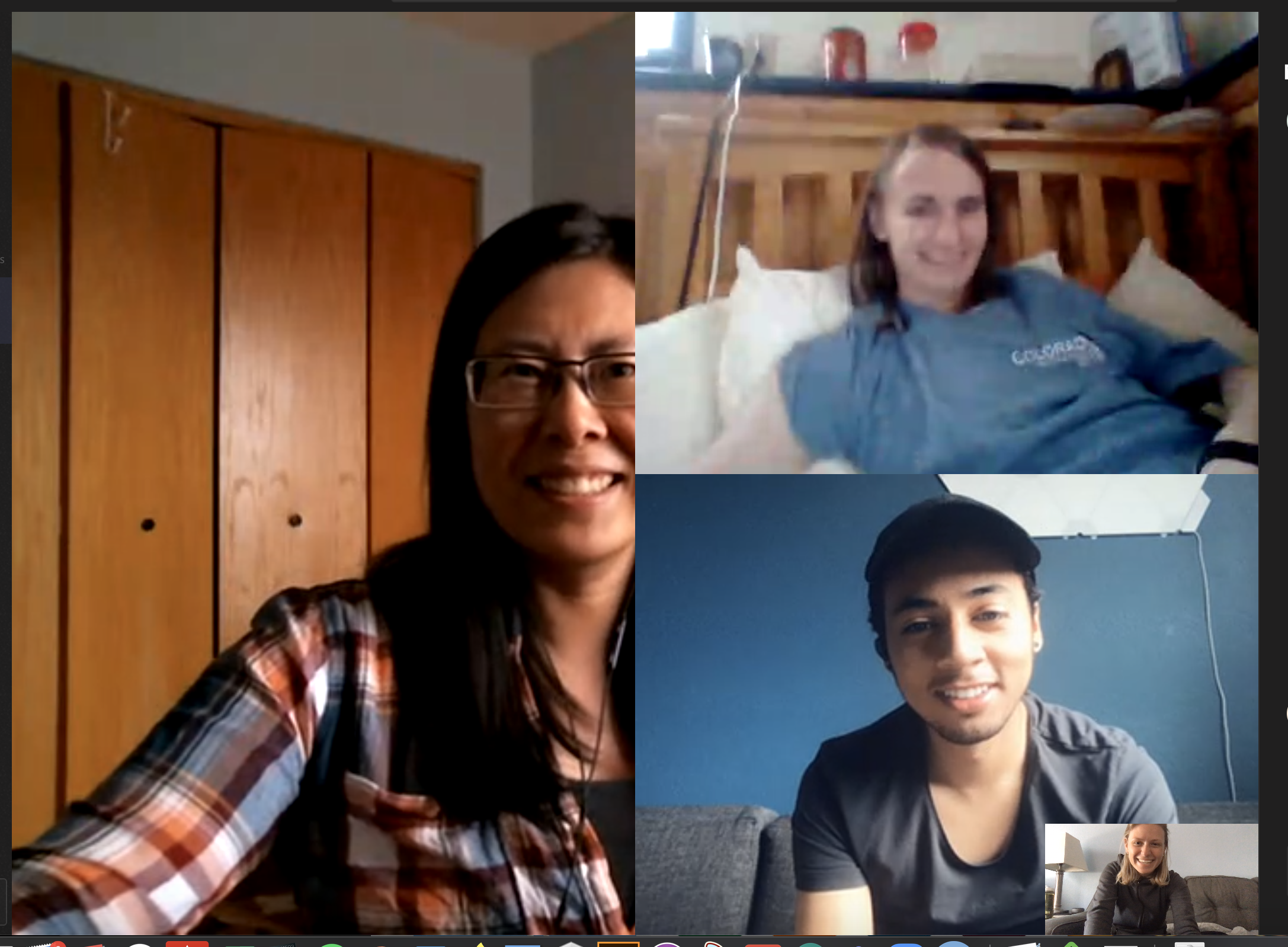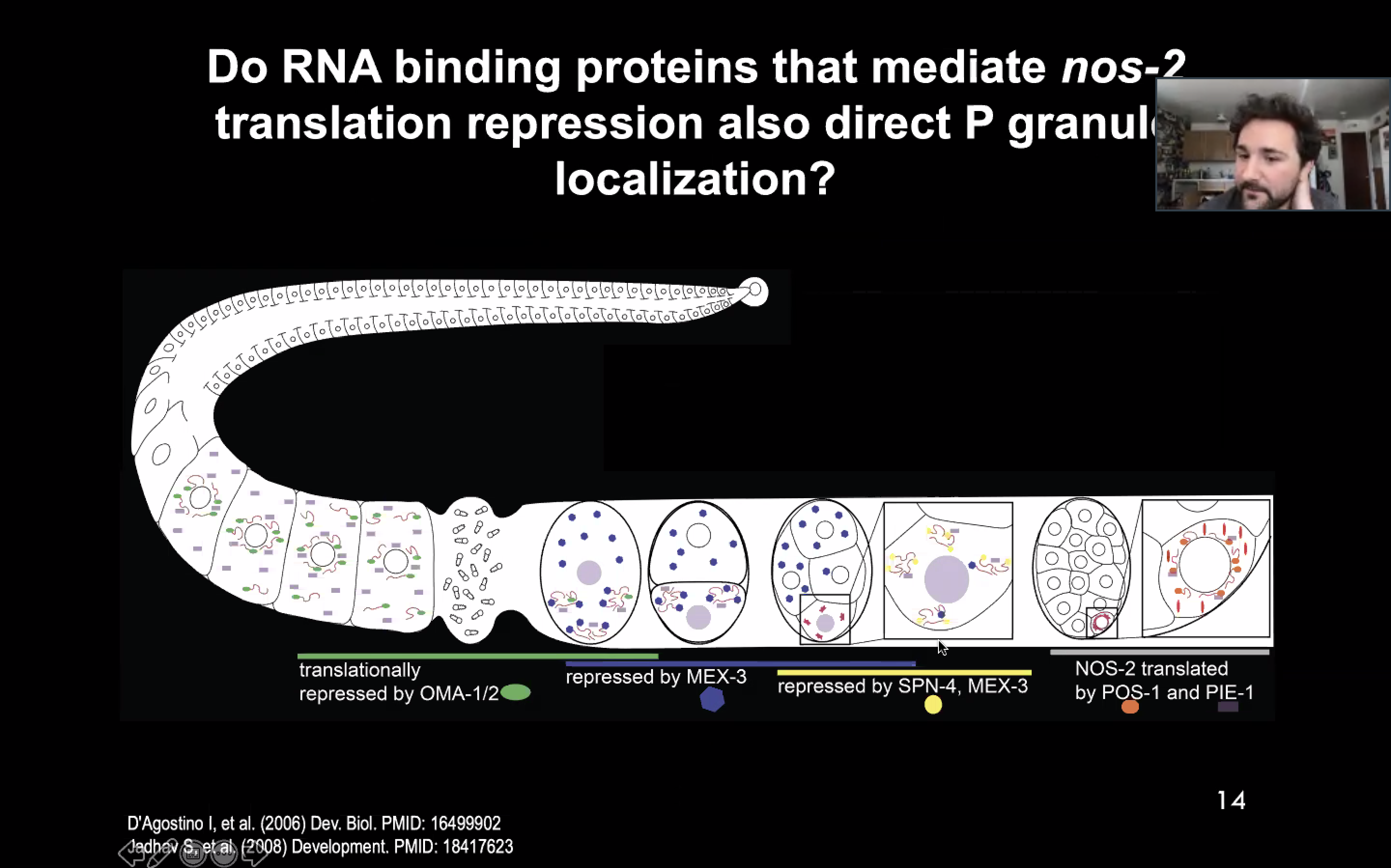As people around the world are affected by the global COVID-19 pandemic, the Biophysical Society is sharing stories from members about how their lives and research have been impacted.
Charlotte Cialek, Colorado State University
How many video calls did you make before COVID-19?
I had attended only a handful. They were nerve-wracking, I never knew where to look. What do you do with your hands? For me, video calls have never felt comfortable.
Now, after COVID-19 requiring physical isolation for more than a month, technology mediates every part of my life. As I’m sure you’ve experienced, the transition wasn’t easy.
My daily computer screen time is up, and I send more emails than ever. And now, I attend a handful of video conference calls weekly. I watched colleagues defend their PhDs, attended my lab (Stasevich Lab) meetings, presented journal club, and drank a beer during the departmental seminar, all on Zoom. In my professional life, I am attending the international TGAC annual meeting. In my personal life, I meet with my friends and family for weekly game nights. All online.

Everyone who attended the 2020 BPS annual meeting probably remembers the keynote lecture. Dr. Xiaoliang Sunney Xie, the keynote speaker, video called in from coronavirus quarantine in China. At the time, everyone there, including the moderator, were surprised and glad the online platform was successful. Now, a multitude of conferences are entirely online. And the transition has been surprisingly easy.
I read a really interesting BBC article about how video calls affect us differently than in-person correspondence. Video calls change the nuances in body and verbal communication we as humans use to understand each other. Interestingly, they cited a study that found that video call delays over 1.2 seconds are perceived by the viewer as “less attentive, extraverted and conscientious”. I couldn’t agree more.
Video calls are exhausting. I feel watched and can’t relax. The eye-contact is misaligned, why is the caller staring at my neck? Did I remember to mute my mic? Any time I hear echo feedback of my own voice, I completely lose concentration. And presenting in front of a screen makes me feel like I’m talking to myself.

On the plus side, I’ve noticed people in video calls seem more polite. Nobody interjects or interrupts while someone else is talking. Everyone patiently waits for the speaker to finish. This isn’t because people suddenly learned manners – Zoom calls glitch out if two people try to talk at once. Everyone courteously allows others to talk, in an overly polite manner: “You go,” “No, you can go,” “I insist, go ahead.” And, for once, everyone shows up to meetings on time.
I wonder, how will this stint of video calls change our in-person communication? Eventually, we will leave self-isolation and be face-to-face again. What will change? Will it be awkward to meet up in person, like it was when I started using video calls? Will we be more considerate? Will we stop talking over each other? Will we be better listeners? Will we better identify with the human in our bosses and colleagues?
Video calls have taken us into people’s homes. Their kids and pets have photobombed our meetings. We see them beyond the context of a professional setting. Such an intimate view of everyone’s personal lives feels almost voyeuristic. With professional and personal lines blurred by technology, will we remember that they have responsibilities and duties outside of work? Will we be a little kinder and more forgiving to each other? Will we be happy to be in person again?
Colorado State University has been completely closed since spring break. The list of people allowed on campus will hopefully soon expand from only “essential employees” to a slightly longer list. Some things like lab work may return to normal soon, but conferences and classes will stay online for the foreseeable future. Though I’m a little nervous about it, I can’t wait for a partial return to normal. Mostly, I’m excited to have a real, in-person conversation with someone again.
